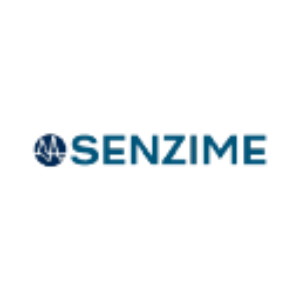New Clinical Study Published in Anesthesiology Confirms the Leading Accuracy and Precision of Senzime's TetraGraph System
A recent study published in the journal Anesthesiology confirms the leading accuracy and precision of Senzime's TetraGraph system. The study, conducted by US-based researchers, compared neuromuscular block monitors and found that Senzime's EMG-based TetraGraph system outperformed AMG-based monitors, aligning closely with a gold-standard laboratory reference. The American Society of Anesthesiologists (ASA) and the European Society of Anaesthesiology and Intensive Care (ESAIC) have recommended routine use of quantitative neuromuscular monitoring, emphasizing the importance of systems like TetraGraph. CEO Philip Siberg highlights that this study could solidify TetraGraph's role as the clinical standard, noting its minimal measurement variability and ease of use compared to AMG-based monitors.
- Senzime's TetraGraph system demonstrates leading accuracy and precision in a new clinical study.
- The study aligns TetraGraph's performance with a gold-standard laboratory reference.
- Published guidelines by ASA and ESAIC recommend the use of quantitative neuromuscular monitoring, supporting the adoption of TetraGraph.
- TetraGraph's minimal variability and overshoot enhance its clinical effectiveness.
- The study suggests TetraGraph could become the preferred monitoring system in hospitals.
- Conventional AMG-based monitors exhibit substantial measurement variability and imprecision.
UPPSALA, SWEDEN / ACCESSWIRE / May 21, 2024 / Senzime (STO:SEZI)(OTCQX:SNZZF) In a new clinical study published in the high-impact Anesthesiology journal, a team of US-based researchers compared the accuracy and precision of commercially available neuromuscular block monitors. The study confirms the leading accuracy and precision of Senzime's TetraGraph system, which produced results similar to a gold-standard laboratory reference, while the conventional AMG-based monitors have substantial variability and imprecision that could be clinically significant.
Recently published guidelines and recommendations by ASA (American Society of Anesthesiologists) and ESAIC (European Society of Anaesthesiology and Intensive Care) have called for routine use of quantitative neuromuscular monitoring to prevent residual neuromuscular block. There are currently two types of neuromuscular block monitors on the market that conform to these guidelines: acceleromyography (AMG)- and electromyography (EMG)-based monitors.
The study, "Accuracy and Precision of Three Acceleromyographs, Three Electromyographs and a Mechanomyograph Measuring the Train-of-Four Ratio in the Absence of Neuromuscular Blocking Drugs" by Wedemeyer Z et al. was designed to compare three commercially available AMG monitors and three EMG-based monitors, to a laboratory gold-standard mechanomyograph (MMG).
The study concluded that the AMG-based monitors produced overshoot of measurements and had substantial variability in the data that could be clinically significant. Senzime's EMG-based TetraGraph-system was shown to measure the responses with minimal overshoot and variability, in line with the gold-standard MMG reference technique
"This is an important, high-impact study that confirms the leading accuracy and precision of EMG as well as our TetraGraph system. This study may well solidify the role of the EMG-based TetraGraph as the new clinical standard, and certainly confirms what should be the preferred monitoring system for hospitals that are conforming to the new guidelines," comments Philip Siberg, CEO of Senzime.
AMG utilizes an accelerometer to measure the acceleration of muscle contraction in response to nerve stimulation. Important limitations of AMG include its time-consuming calibration procedure, reported variability and overshoot of data, and limitations of use in certain surgeries when free movement of the monitored muscle (thumb) cannot be assured. EMG differs as uses a disposable sensor and advanced algorithms that measure events at the neuromuscular junction - where the drugs work. The use of a disposable sensor to measure electrical activity is very precise and does not require the patient's thumb to move freely, hence eliminating many of the limitations of AMG technology.
For further information, please contact:
Philip Siberg, CEO of Senzime AB
Phone: +46 (0) 707 90 67 34, e-mail: philip.siberg@senzime.com
About Senzime
Senzime, headquartered in Sweden, is a leading medical device company that develops, manufactures, and markets CE- and FDA-cleared patient monitoring systems. The company provides an innovative portfolio of solutions, including the TetraGraph® and ExSpiron® 2Xi for accurate monitoring of neuromuscular and respiratory functions, typically under and after surgery. The goal is to help eliminate in-hospital complications, and radically reduce health care costs related to surgical and high acuity procedures.
Senzime targets a market opportunity valued more than SEK 40 billion per year, and operates with sales teams in the world's leading markets. The company's shares are listed on Nasdaq Stockholm Main Market (Nasdaq: SEZI) and cross-traded in the US on the OTCQX market (OTCQX:SNZZF). More information is available at senzime.com .
Attachments
SOURCE: Senzime
View the original press release on accesswire.com
FAQ
What recent study confirms the accuracy of Senzime's TetraGraph system?
How does Senzime's TetraGraph system compare to AMG-based monitors?
Which organizations recommend the use of quantitative neuromuscular monitoring?
What are the benefits of Senzime's TetraGraph system over AMG-based monitors?







